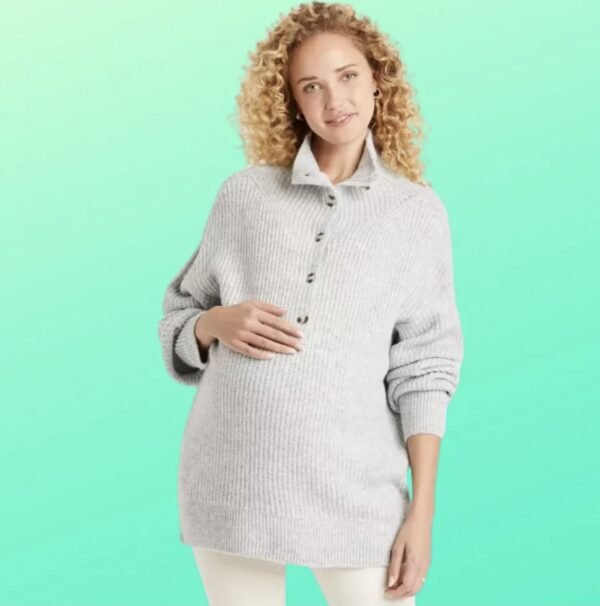
As the little human being in your belly grows, so does your bump. Naturally, the extra pounds you gain are essential during pregnancy, and they are only adding more beauty to your mum-to-be glow.
At this point, many mums start wondering if they should buy new maternity clothes, as some of their current items don’t fit them anymore. This can lead to concerns over budget and the impact on the environment. Research by maternity brand Isabella Oliver found that new mums-to-be buy around 21 items of clothing during the course of their pregnancy, totalling about £700.
That’s a lot of money – money you’d no doubt rather spend on your baby and buying a new sleeping bag for a newborn, for example.
UK baby brand, Nuby, explores how to build a maternity wardrobe the sustainable way so that you can save your pennies for bits and pieces that will last much longer once your baby is born!
Look through your own wardrobe
It’s likely that you already have quite a few items handy in your wardrobe. Some of them might be sitting at the back of your closet, while others might even be put away. Let’s face it, we all go through weight fluctuations, so it’s likely that you keep a few items for such times. Besides, who doesn’t love a cosy baggy sweater?

Pieces such as loose-fitting dresses, oversized shirts, baggy jeans, stretchy shirts and dresses, large sweaters, and flowing skirts would all be perfect for your maternity wardrobe. You just need to make sure that they are comfortable and stretchy enough to support your bump.
Hand-me-down pregnancy clothes
It’s likely that once your baby starts growing, you and your other mum friends will eagerly enter the fun game of exchanging children’s clothes. So why not make pregnancy your rehearsal?
If you have friends who were recently pregnant, you might be able to borrow their maternity clothes, getting more use out of them. Alternatively, you can join pregnancy support social media groups and find women in your location who are offering their used maternity clothes.
Visit second-hand shops
In the same fashion, you can visit charity shops and see if you can find any pregnancy attire there, although the options might be more limited.

Nevertheless, you don’t have to restrict yourself by only looking for bump-specific clothes; any oversized and flowy garments would also work perfectly fine. Plus, you never know what you will find in charity shops – maybe you’ll find a few extra things for the baby too!
This is a great way to give clothes a second life, thus extending their life cycle.
Engage in some DIY fun
You can easily adjust some of your current clothes to fit your bump.
Maternity belts are extremely popular amongst mums-to-be because they allow you to unzip your pants or jeans and support them with a comfortable belt. They are especially useful in the first months of pregnancy.
The good news is that you don’t even have to buy them. All you need is an old stretchy T-shirt or tank top and some DIY enthusiasm. Cut into the shape of a pregnancy band, and voila! What a great way to recycle your old and unwanted clothes!
Another part of your body that grows along your bump is your breasts. That means you need to size up. Buying lingerie that you won’t wear after your pregnancy is unsustainable. Instead, get bra extenders and add them to your current inventory of bras. They are cheap and can easily be found in your local fabric store or online. All you have to do is sew them.
This option is ideal for the first trimester, but as your body starts to make breast milk, your cup size will also grow. At this point, you might want to invest in a nursing bra, as you will be able to use it post-pregnancy while breastfeeding too.
Staying comfortable during your pregnancy is vital. While new maternity clothes offer you that, they are an unsustainable and costly way of updating your pregnancy wardrobe. Instead, opt for second-hand items and repurpose your current clothes.
Once you’re finished with them, lend them to a pregnant friend or post them on one of the social media groups. That way you’re doing both the person and the environment a favour.





